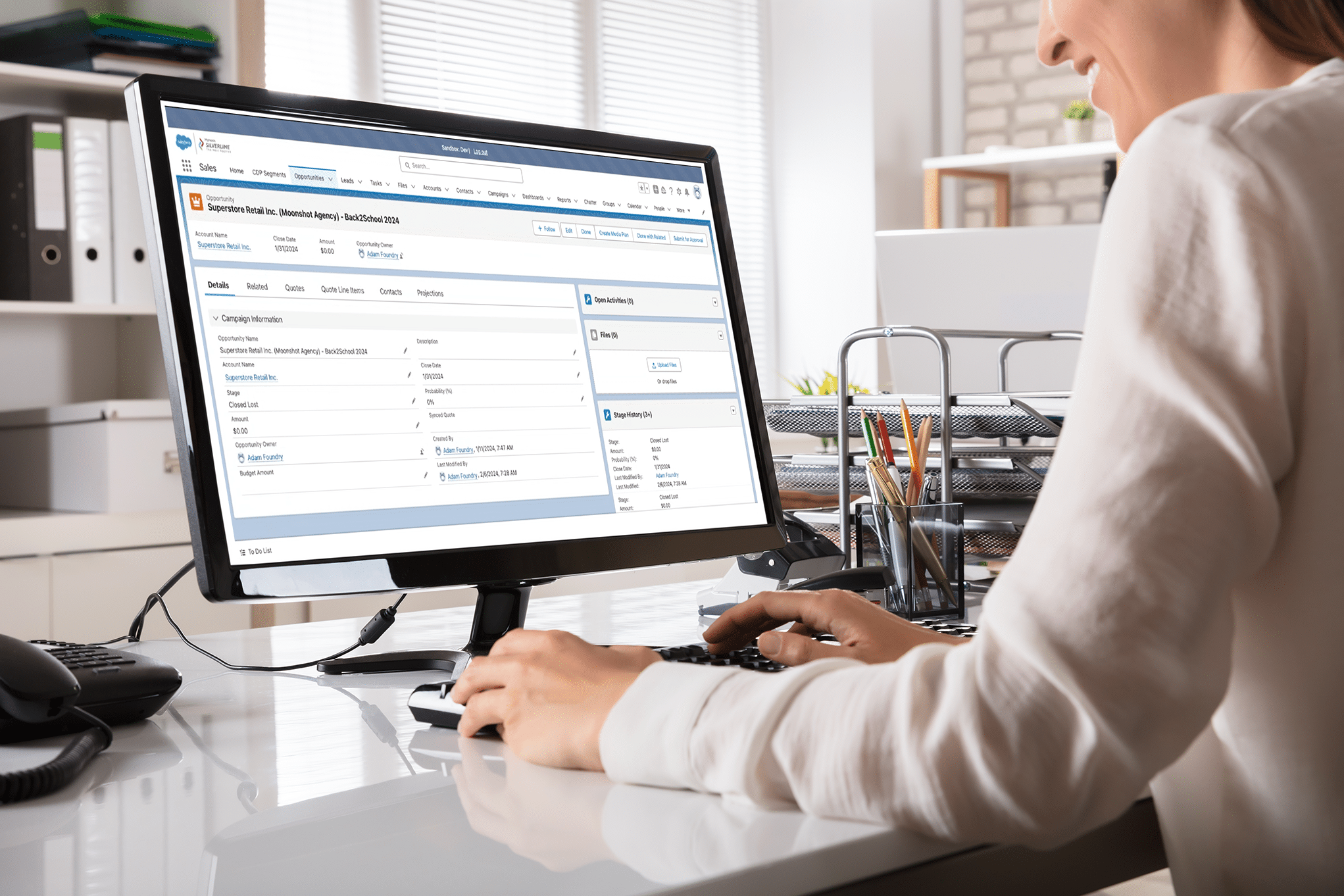Do you know where your fax machine is? Probably stuck back in the ’90s with your CD player and VCR.
While some industries still rely on faxes, the media industry is not one of them. They have moved on to automated, digital processes. Or have they? Some media companies have taken steps to modernize but are still facing a constant barrage of new issues that can make it challenging to stay ahead of the curve.
Here we take a closer look at some of those obstacles and what you can do to leave your faxes in the dust.
Internal and external ad sales process challenges
Let’s look at the ad sales process through two lenses: internal and external.
When we peer through the internal lens, we see many of the remnants of historical challenges that still exist today. Advertising has been heavily fragmented among the different channels available to advertise on – digital, linear, radio, print, etc. Media companies have individual ad sales teams and systems dedicated to each of these channels, with little to no crossover between them.
And even though the media world is rapidly changing, forms of this fragmented organizational structure still exist today, with ad salespeople only focused on one channel. So, suppose a potential advertiser wants to spend some ad dollars across multiple channels. In that case, they have to interact with a lot of different people and systems, which usually results in frustration all around.
Zoom out of internal and in on external, and you can probably guess where this is heading. Externally, the ad sales process has become super exasperating for advertisers. It entails multiple emails and phone calls with lots of back and forth. Take all those communications, multiply them across the fragmented channels, and you’ll arrive at something equal to a maddening ad sales process.
Accelerating the ad sales process
The ad sales process aims to engage your customers and make it easy for them. Companies want to accelerate that process as much as possible, but moving faster hinges on two underlying factors: a foundation infrastructure and collaboration.
We find that at most media companies, a less fragmented infrastructure allows teams to move faster. Companies can internally centralize, automate, and aggregate information by adding Salesforce tools such as Salesforce Media Cloud, Salesforce Experience Cloud, Slack, MuleSoft, or Datorama.
Without disparate systems, day-to-day life is easier both internally and externally by providing a more seamless and effective path for advertisers to interact with media organizations. Whether submitting media plans, making a sale, seeing if a campaign is delivered, or conducting approval processes, it is all managed on the central platform.
It is those Salesforce systems – especially Slack – that drive collaboration internally and externally. Without a tool like Slack, communication involves numerous calls and emails or many versions of a media plan shared upstream and downstream with no real audit trail. Collaboration becomes more efficient and speedier with Salesforce because automation is being brought into the equation. You can move quickly as an organization across all your processes, from ad sales to onboarding.
Start by looking at your current ad sales process and identify touchpoints that you may not be optimizing for your business. First, examine if you have the right technologies in place, and second, look at how you are using those technologies across all your ad sales processes – and if there is a better, more beneficial approach.
Slack promotes collaboration
Slack Connect transforms the way you work with people outside your company. It moves conversations out of siloed inboxes and into Slack channels and direct messages so you can work quickly and collaboratively with your advertising partners. Slack Connect has been shown to help companies with the following:
- 4x faster deal cycles for a sales team
- 64% decrease in backlog tickets for a customer support team
- 2x faster close in company acquisition for a business development team
You will strengthen your client relationships, decrease response times, and be able to share real-time updates on campaign progress, all from a single source of truth. And these Slack benefits carry over to your internal systems. Slack can be tied to many of your existing systems beyond Salesforce, such as an order management system that delivers updates directly in Slack.
Self-service provides a better experience
Self-service has quickly become a vital asset of the ad sales process. It is a portal where an advertiser can log in and independently buy their own ads, set rates, input a media plan, or conduct any other activity. It provides that foundation infrastructure we mentioned earlier that quickens the ad sales process.
We like to classify self-service into two tiered buckets. Sitting at the top is the curated, white-glove experience that goes to your biggest advertisers. Just below that is a self-service offering aimed at your lower revenue-generating advertisers. This allows media companies to elevate their top sellers and leave the self-service portal for a more transactional audience. With a portal, you can sell more with fewer people.
We like to think of self-service as a journey. Set up your self-service portal with a few items that will demonstrate the power of the portal to save time and improve efficiency. Get your advertisers familiar with interacting with your organization via a portal. Let them see how the portal provides an enhanced experience and then continue to improve upon that experience over time.
How Silverline can help your ad sales process
The Silverline team leverages insight acquired through 10+ years in the business and thousands of engagements, along with real-world expertise gained across the Media and Entertainment industry, including broadcast, publishing, and agencies. We tailor digital transformation solutions to develop and improve your ad sales processes – giving you the edge to compete for more ad dollars by providing a better experience for advertisers. Learn how we can help your media organization.




